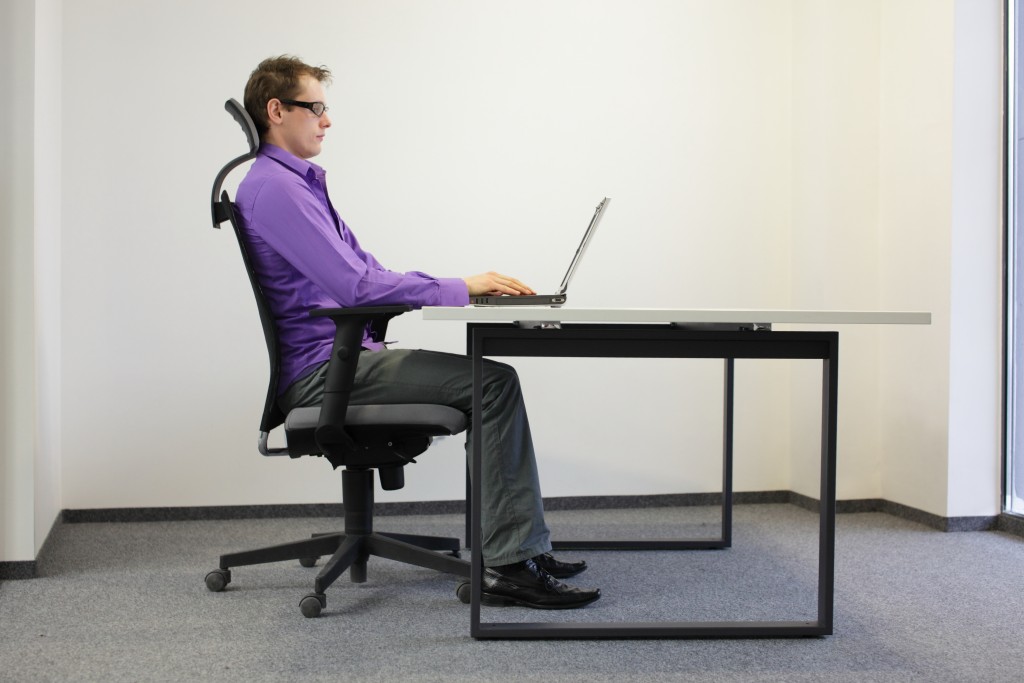A variety of factors affect your workers’ productivity. These can include management practices, engagement and the technology your company uses. An element that bosses often overlook is how comfortable employees are in their workstations. Most workers want their employers to offer healthy workplace benefits, like sit-stand desks, healthy food options and ergonomic furniture and peripherals.
Ergonomics refers to the study of individuals in their workplace, and how it can be designed or modified to fit the employee’s needs and preferences. The main goal of this is to get rid of discomfort and potential for injury. This is something that employees consider to be an important part of their everyday work lives.
According to a recent study of over 700 workers in the US, 77 percent of respondents think that ergonomics in their place of work is crucial. About 81 percent of them think it affects their productivity. Ergonomics is more likely valued by older respondents (aged 35 to 44 years old).
The Effects of Poor Ergonomics
According to the National Safety Commission (NSC), one of the leading causes of workplace injuries is overexertion and bodily reaction.
It’s split into two parts:
- Repetitive motion — This includes microtasks that result in strain and stress on the part of the body you repetitively use. A good example of this is typing and constant use of a computer mouse.
- Non-impact injury — This happens when you use excessive effort on a certain object. This is often the result of tasks like heavy lifting.
If you want your employees to be satisfied and productive at work, you need to make their stations more welcoming and ergonomic. But where should you start?
Provide adjustable chairs and desks
Everybody’s body is different. They vary in weight, size, and other attributes. You need to take all these into account when setting up a workstation. As such, it’s important to have adjustable chairs and desks. These let your employees customize their seat height, their distance from the table, and their back angle.
An adjustable desk can also be modified quickly so that it can accommodate people who want to stand while working. What’s great about these products is that you can buy them in bulk and at wholesale prices with a quick Facebook marketplace search or an online auction.
Modify your monitors

Most monitor stands just take up a lot of space. They also have limited adjustment options. This can leave some of your employees with neck strains because they need to either bow down or look up when looking at the monitor. You can solve this problem by attaching adjustable stands and arms to your monitors. These let your workers personalize their monitor’s height, distance and angle to their liking. If you got them a Plantronics call center headset, make sure the cable has enough length so that they can move their heads around freely.
Get ergonomic peripherals
While most keyboards and mice are affordable and durable, they’re not great for prolonged use. They put the arms, wrists, and hands at an unnatural angle for hours. It’s no surprise that a lot of workers experience carpal tunnel syndrome. This is a painful sensation in the wrist that happens when the median nerve gets pinched by the bones, ligaments, or muscles surrounding it during repetitive movement. Such movements involve flexing the wrist in different positions repeatedly when using a computer mouse.
If you want your employees to avoid injuries from working repetitively, provide them with ergonomic computer peripherals. Different companies, like Microsoft, Logitech and Kinesis, have products that support the natural position of the hands.
For keyboards, look for ones with a curved design that makes it easy for workers to position their hands. It’s even better if the shape is also tented to make it even more comfortable to use. As for mice, opt for ones that are positioned vertically. These put the hands in their natural “handshake” position, which reduces fatigue and possible injuries in the long run.
Promote the best practices
Apart from offering ergonomic equipment, you should also teach employees to use them properly.
Here are some guidelines for proper posture in the workplace.
- Chair — Your chair height should be enough so that your thighs are parallel to the floor and your feet rest flat on the floor. Use a footrest, if necessary. Adjust the armrests so that they don’t cause your shoulders to tense up.
- Desk — You should make sure that your desk has enough space for your knees, thighs, and feet to move freely. Your arms and elbows should also be at a 90-degree angle when they’re rested on your desk.
Improve your employees’ productivity and satisfaction by providing them with an ergonomic workstation. Adjustable chairs and tables and ergonomic peripherals may cost a lot of money, but they’re worth the comfort you’ll provide your workers. Once they learn the best posture practices, they’ll stay focused on their tasks instead of being distracted by back or wrist pain.

